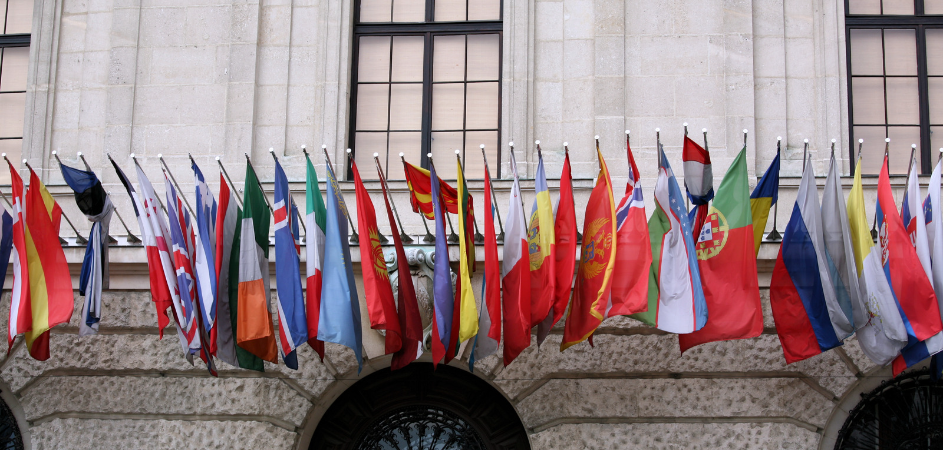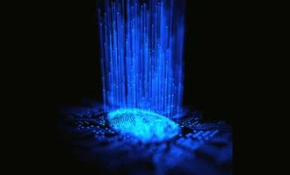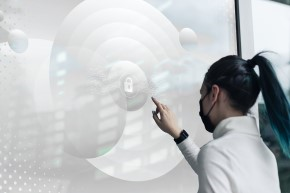Identity verification processes are of utmost importance for security reasons, and any mistake can have major consequences. In today's world, identity verification processes are important not only for individuals' security but also for organizations and governments to prevent fraud and ensure compliance with regulations. One critical component of identity verification is the ability to accurately read and verify the information on official documents such as passports. This is where MRZ (Machine Readable Zone) code comes in. MRZ code is an essential component of passports that enables the easy reading and verification of identity information by machines.
A Brief History of Machine Readable Documents: From Punch Cards to Biometrics
In the early days of computing, the primary method of data storage and processing was the punched card. Developed in the late 1800s, punched cards were used for everything from census data to accounting records. Each card contained a series of holes that represented different data points, and the cards could be read by machines called tabulators.
The MRZ was first introduced in the 1980s as part of the machine-readable passport (MRP) created by the International Civil Aviation Organization (ICAO). The MRZ included two lines of characters that could be read by a machine and contained personal information about the passport holder, including their name, date of birth, and passport number. The MRZ enabled faster and more accurate identity verification at airports, which was essential in an era of increasing international travel. The use of MRZ expanded beyond passports to other types of MRDs, such as visas and identity cards. In the early 2000s, the ICAO introduced a new standard for biometric passports that included a chip containing a digital photograph and fingerprints in addition to the MRZ. This improved the security of the passport and made it even more difficult to counterfeit.
MRZ has played an important role in the history of authentication technology. Its emergence has revolutionized the way governments and organizations verify the identity of individuals, making the process faster, more efficient, and more secure. As technology continues to evolve, we can expect to see new applications and innovations in the use of MRZ codes for identity verification.
What is MRZ Code and How Does It Work?
MRZ code is a string of characters that appears on the bottom of the personal data page of a passport. It is a combination of letters, numbers, and symbols that are arranged in three lines. The first line contains the document type (P for passport), the country code, and the passport number. The second line has the passport holder's last name, first name, and nationality. The third line contains the passport holder's date of birth, gender, and passport expiration date.
To read the MRZ code, optical character recognition (OCR) technology is used. OCR technology allows a machine to scan and interpret printed characters, such as those on the MRZ code. The MRZ code is then verified against the information in the passport's electronic chip. The electronic chip in the passport contains a digital version of the personal information found in the MRZ code. When a passport is scanned, the MRZ code is read and compared to the information on the electronic chip. If the MRZ code matches the information on the electronic chip, the identity of the passport holder is verified.
MRZ code is designed to be easily read and processed by machines, making it a reliable and efficient method for identity verification. It is used in a variety of contexts, such as border control, airport security, and financial transactions. The MRZ code has an important place in modern authentication processes because it provides fast and accurate verification of credentials.
Today, MRZ technology is used in a variety of industries beyond travel and security, including banking and finance. MRZ technology allows for fast and accurate data entry and verification, which is essential in a world where data security and identity theft are major concerns.

Advantages of MRZ Code in Identity Verification
Accurate and efficient verification of personal information is essential to ensure the safety and security of individuals and organizations. The MRZ code is a reliable tool for authentication that offers several advantages over traditional methods.
Productivity
MRZ codes are designed to be read by machines quickly and accurately, making the authentication process more efficient. Codes can be read by a variety of devices, including browsers, cameras, and mobile devices; In this way, data can be captured and verified in real-time.
Truth
MRZ codes are highly accurate, meaning errors in personal information can be minimized. Since the codes are designed to be read by machines, it eliminates the risk of human error. MRZ reduces the risk of fraud or identity theft by ensuring that personal information is accurately captured and verified.
Standardization
MRZ codes follow a standardized format, so they can be used in different countries and industries. Having a standard format helps streamline the authentication process and ensures consistent capture and verification of personal information.
Security
MRZ codes are highly secure, making them an ideal tool for authentication. It prevents fraud or identity theft, as codes are difficult to forge or manipulate. Additionally, codes can be encrypted, which adds an extra layer of security to the authentication process.
Cost-effective
MRZ codes are a cost-effective solution for authentication. The codes can be read by a variety of devices, including inexpensive browsers and mobile devices, and can be easily accessed by various organizations. In addition, the standardization of MRZ codes indicates that there is no need to invest in costly custom solutions.
As a result, MRZ codes offer several advantages in the authentication process. These advantages make MRZ codes an essential tool for many industries, including travel, finance, and healthcare.
Role of MRZ Verification in Combating Money Laundering and Terrorism Financing Threats
In recent years, the world has witnessed an increase in money laundering and terrorist financing activities. Because these illegal activities threaten the stability of the global economy and pose a significant risk to national security, governments and financial institutions around the world are looking for ways to combat these threats effectively. One of the key tools in the fight against money laundering and terrorist financing is identity verification. The ability to verify the identity of individuals and entities involved in financial transactions is crucial to preventing these illegal activities. This is where MRZ verification comes into play.
MRZ verification is a reliable tool for verifying the identity of individuals and entities involved in financial transactions. The information contained in the MRZ Code can be verified against government databases to ensure that the individual or organization is not engaged in any illegal activity. In addition, MRZ verification can be used to combat identity theft and fraud, which contribute significantly to money laundering and terrorist financing. By verifying the authenticity of identity documents, financial institutions can prevent criminals from using fake or stolen identities to engage in illegal activities.
MRZ Code Verification by Sanction Scanner Products
Sanction Scanner uses MRZ code as an additional verification feature to detect suspicious activities and individuals. The software checks the MRZ code according to the personal identifier information of scanned customers. Thus, users can verify whether the information is right or not. MRZ code identity verification provides a fast, secure, and accurate way to protect your company from bad actors and comply with regulations related to sanctions and watchlists.





